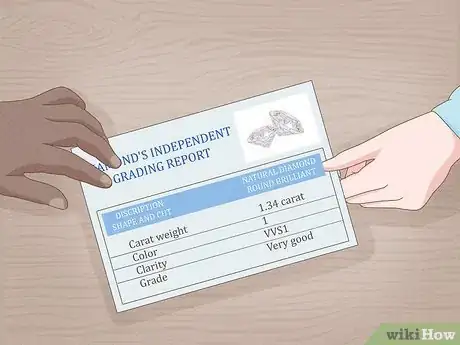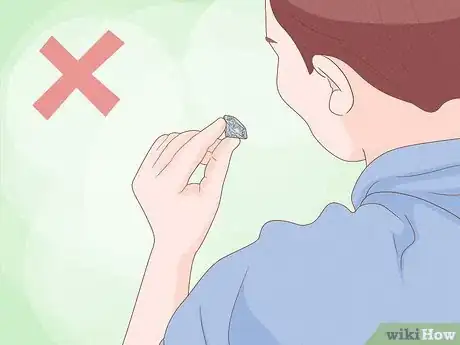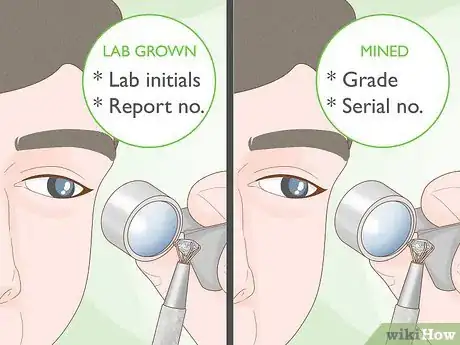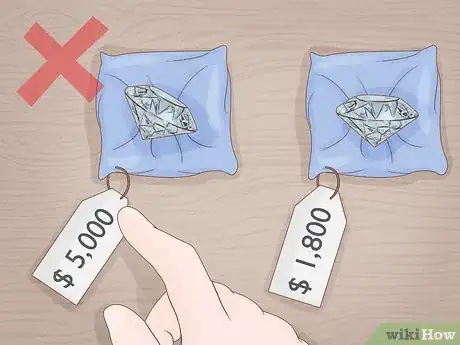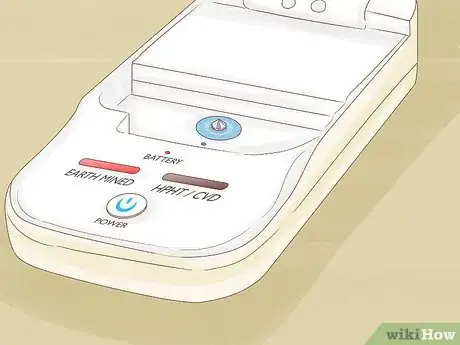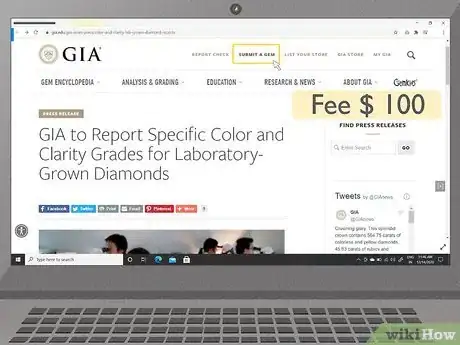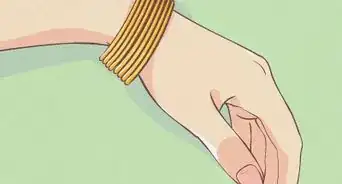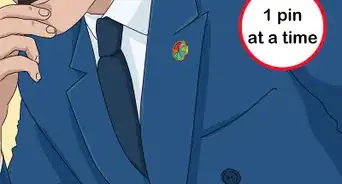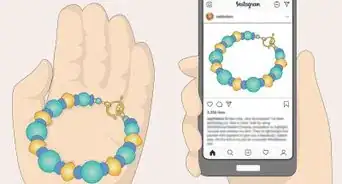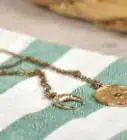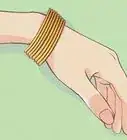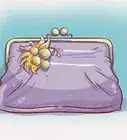This article was co-authored by Cory Schifter and by wikiHow staff writer, Jessica Gibson. Cory Schifter is a Jeweler, Certified Jewelry Appraiser, and the Owner of Casale Jewelers in Dongan Hills, Staten Island, New York. Casale Jewelers is known for its selection of fine jewelry, designer brands, engagement rings, certified diamonds, custom-made jewelry, and watches. Cory has over 10 years in the jewelry industry and is a certified jewelry appraiser. Cory was featured on NY1 News “Got it Made in New York” for Casale Jewelers’ custom design business and Casale Jewelers was recognized by American Express and Facebook in 2012 as one of the top five small businesses in the nation.
There are 7 references cited in this article, which can be found at the bottom of the page.
This article has been viewed 11,665 times.
Lab-grown or synthetic diamonds are enjoying a surge of popularity—they're less expensive, ethically produced, and easier to trace than mined diamonds. If you're concerned that lab-grown diamonds are fake, don't be! Synthetic diamonds look the same as mined diamonds and they have the same molecular and physical properties. Unfortunately, this means that it can be tricky to identify them, especially if a jeweler is trying to charge you a mined-diamond price for a lab-grown stone.
Steps
Lab-Grown Diamond Basics
-
1Learn the other names that lab-grown diamonds go by. Many jewelers offer lab-grown diamonds along with mined diamonds, but they may be called several things. For example, these terms can mean lab-grown:[1]
- Lab-made
- Lab-created
- Synthetic
- Cultured
- Created
-
2Talk with reputable jewelers to learn if a diamond was grown in a lab. Whether you want to buy a lab-grown or mined diamond, it's important to go to a jeweler you trust. A great jeweler won't just tell you where a diamond came from—they'll give you a report that proves what type of diamond you're getting. If the jeweler refuses to give you documentation or expects you to just trust them, take your business somewhere else.[2]
- Look for a jeweler who's a certified gemologist. They might display their credentials in the store or you can ask if they're affiliated with a professional association like the Gemological Institute of America.
Advertisement -
3Ask for a diamond's independent grading report. Your jeweler should be able to give you an independent report on where the diamond came from. If it came from a lab, the report should clearly state that it's a lab-grown diamond and tell you which lab it's from. Most reports also give the 4Cs assessment that tells the cut, color, clarity, and carat of the stone.[3]
- If the jeweler doesn't have the information or isn't willing to share it, consider shopping with a different jeweler.
-
4Don't try to identify lab-grown diamonds just by looking at them. Lab-grown diamonds have come a long way since they were originally developed decades ago. Now, if you glance at diamonds, you can't see differences between the mined and lab-grown ones. In fact, they have the same physical and molecular properties, so lab-grown diamonds are effectively "real" diamonds.[4]
- Original lab-grown diamonds from the 1970s might have a yellow tinge to them since lab techniques hadn't been perfected yet.
-
5Use a magnifying glass to find a lab's laser inscription on the diamond. Hold a magnifying glass over the widest part of the diamond, which is called the girdle. If it's a lab-grown diamond, you'll see the initials of the lab or agency that certified the stone along with the report number that's unique to the stone. If it's a mined diamond, you might see the diamond grade or a serial number inscribed on the girdle.[5]
- If you see any initials, serial numbers, or grades, you can ask the jeweler to tell you more about them or look the information up online. For example, go to the lab's website and enter the number to view the report.
-
6Don't use the price of the diamond to identify if it's lab-grown or mined. Although lab-grown diamonds are often a lot less expensive than mined diamonds, a low price doesn't automatically mean you're getting a lab-grown stone. A mined diamond that's poor in quality might actually cost less than a lab-grown diamond in great condition, for instance.[6]
- This is another reason it's important to shop with a jeweler who's honest about what you're purchasing.
Sophisticated Tests
-
1Hold the diamond under a UV screener to look for fluorescence. If your jeweler has a UV tester, ask them to place the diamond under the UV light to show you the results. A mined diamond shows up blue under the UV light while a lab-grown diamond looks red.[7]
- Don't be surprised if a jeweler doesn't have a UV screener available. Many of these high-quality screeners cost tens of thousands of dollars.
-
2Scan the stone with an infrared spectrometer to identify if it's a type IIa diamond. All diamonds are graded based on their imperfections. Most mined diamonds are type Ia while the majority of lab-grown diamonds are type IIa. Since the equipment to test the diamond is really expensive, you'll need to send your loose stone to a gemologist who can scan and grade the diamond.[8]
- Keep in mind that about less than 2% of mined diamonds are type IIa diamonds, so this indicator won't give you a definitive answer.
-
3Locate an independent appraiser and send your diamond for an evaluation. Want to see if a diamond you already own was grown in a lab? Research independent diamond and gem appraisers like the Gemological Institute of America and get your diamond tested with their high-tech equipment. For a fee of around $100, they'll send you a report about how the diamond was mined or produced along with a report about the diamond's quality.[9]
- If you're interested in the value of the diamond, don't forget to ask the appraiser to include a value. You can also use this information if you want to insure the diamond.
References
- ↑ https://www.gemsociety.org/article/lab-grown-diamonds-faq/
- ↑ https://www.gia.edu/gia-news-research-diamond-buying-tips
- ↑ https://www.gia.edu/gia-news-press/color-and-clarity-lab-grown-diamond-reports
- ↑ https://www.gemsociety.org/article/lab-grown-diamonds-faq/
- ↑ https://www.gemsociety.org/article/lab-grown-diamonds-faq/
- ↑ https://www.gia.edu/gia-news-research/difference-between-natural-laboratory-grown-diamonds
- ↑ https://www.nationaljeweler.com/diamonds-gems/grading/7230-these-are-the-lab-grown-detection-devices-retailers-need
- ↑ https://www.mygemologist.com/learn/lab-grown-diamonds/how-to-tell-if-a-diamond-is-natural-or-lab-grown/
- ↑ https://www.gia.edu/submit-a-gem-duplicate


